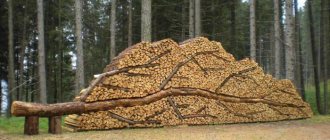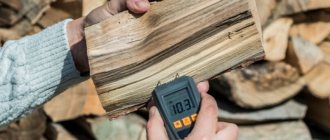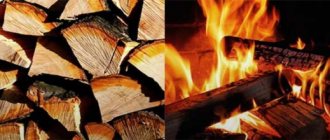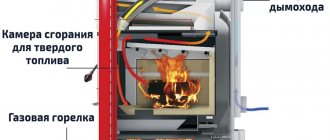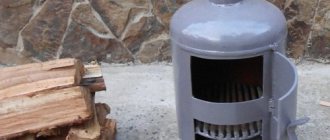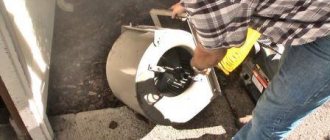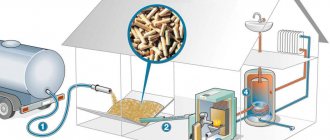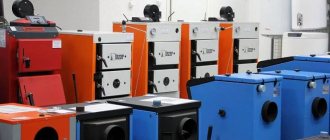29.10.2018 13:59
It is believed that the main thing about firewood is the amount of heat it produces during combustion. The higher this indicator, the less wood will be needed to maintain the temperature in the room. Indeed, this factor is decisive when you order firewood. But it is worth considering other nuances that help you choose the right wood. For example, if you have been heating your stove with pine or spruce for several seasons in a row, then it’s time to switch to alder, and there are good reasons for this.
Spruce
Many woodworkers wrinkle their noses at the mention of spruce because its heat output is usually low and it burns to ashes without leaving any embers.
But this variety of trees still occupies its niche among wood suitable for use as firewood. Spruce burns easily and produces heat quickly, so it is excellent if you need to quickly warm up a cold house. In addition, thanks to its structure, it is easier to chop spruce into small chips, and no supply of firewood would be complete without spruce chips for ignition. So-called firewood for baking in special ovens is often made from finely chopped spruce (or aspen) precisely because such firewood burns quickly and evenly. By adding small amounts of spruce wood frequently, every three to five minutes, you can maintain complete control over the heat. Previously, spruce firewood was called kitchen firewood, but birch firewood was called firewood for the living room.
According to the old Norwegian tradition, the fireplace was heated with spruce wood at Christmas. The Christmas bundle - a small woodpile that was specially prepared for Christmas and kept inside the house - was traditionally made from spruce logs. Many made it from damp wood for the sake of the smell and did not burn it with this wood until Easter.
Spruce has a fairly dense internal structure. This makes the wood crackle and bounce as the resin pockets explode in the fire. Therefore, it is better to use them in a stove or fireplace with a glass door. Many people like this crackling sound - it gives a feeling of life in the fireplace.
Due to the great demand for birch firewood, loggers often sell spruce firewood quite cheaply. The difference in price turns out to be much higher than the difference in heat output. On average, the density of spruce is 380 kilograms per cubic meter, possible variations are from 300 to 600 kilograms. Late spruce is heavy and full of energy.
Light willow logs
If you come across willow firewood in your field of vision, you shouldn’t refuse them. The heat from them is great, the flame is even, and on top of that, there is no soot. The only negative is that they burn out very quickly. But this is easily offset if there are a large number of willow trees in the area of residence. Many landscaping companies do not give them enough time to form. Old trunks are cut down, and branches are removed from still young trees. So don’t miss any opportunity to profit from such fuel for your own home, bathhouse or fireplace.
As is clear, there are too many types of wood, and to list all their types, you could write a thick book, or even more than one.
Because of this, in addition to these varieties, it is worth mentioning at least a few more:
- Elm. It produces a lot of smoke, does not crack well and requires a lot of time to ignite.
- Poplar. Like firewood for a stove - quite nothing. They prick without problems, they just scatter sparks and burn quickly.
- Beech. It is also difficult to burn and split, but it is possible to use it raw.
- Fir. Like poplar, it splits and ignites easily, but it can hardly be done without a decent amount of smoke and sparks.
- Sycamore. Wood is easy to kindle, but difficult to split.
Can they be used for the combustion chamber in a furnace? Everyone can find the answer to this question themselves. But, on the other hand, why not?!
Which ones are best for the oven?
Any wood can be used as fuel. The main thing is that they exist. Each region has its own preferences, depending on what trees grow in the area. Many people believe that birch or alder are the best. The choice is yours.
To the bathhouse
The choice of logs for heating a sauna depends on the design of the stove. Many people prefer:
- Alder. They produce a persistent heat and burn almost smokelessly. There is a popular belief about their healing power;
- Birch. Burns evenly, the heat is strong;
- Willows. The heat transfer is low, you will need a lot of them, but the spirit in the bathhouse will be especially light.
It is not recommended to use oak ones - they take a long time to burn out, the heat is intense, and they emit a large amount of carbon monoxide. Periodically, aspen is used to clean the chimney. If the furnace firebox is remote, the main selection criterion is heat transfer.
For home heating
Hardwood firewood has the best qualities and is used more often. Birch, oak, linden - any, depending on their availability and needs. The main thing is to be dry. In fireplaces it is better to use those types that smoke less and do not “shoot”.
Heating with wood can be caused either by necessity - due to the lack of another type of fuel, or by personal desire. Logs burning in the oven create an unsurpassed atmosphere of warmth and comfort, emit a lot of heat, and for the most part provide a healing effect.
Air supply dependent
The paradox is that we ourselves reduce the combustion temperature and heat transfer of the fuel by limiting the supply of oxygen. The dampers of the furnace or boiler are covered in order to increase the duration of the process and thus, in our opinion, save fuel. An exception is the burning temperature of a fire in an open fireplace, where air from the room flows freely.
But even a fireplace fire obeys the chemical formula for ideal wood combustion, presented in a simplified form:
C + 2H2 + 2O2 = CO2 + 2H2O + Q (heat).
On the left side of the equation are carbon and hydrogen, burned in the presence of oxygen. On the right are the products of combustion, these are carbon dioxide, water and the generated heat, which we use for heating. In practice, air must be supplied to the furnace in an amount of 130% of the volume required for combustion. Then, when burning, dry firewood develops a temperature close to the maximum.
Subtleties and nuances
- The worst thing is if you have damp aspen firewood. This type of wood produces a small amount of heat, so aspen firewood will be very difficult to light. The logs will slowly smolder when exposed to temperature, releasing very little heat.
- A good option for quickly kindling raw logs is birch or spruce. Despite the fact that these tree species emit a lot of soot and soot when burned, they are optimal for quick kindling. The fire catches on the chips and birch bark in literally a matter of seconds.
- An original way to quickly dry wood was invented by our ancestors. Salt should be poured in large quantities onto wet firewood. The salt will draw out some of the moisture, and the firewood will become usable.
- If we light a fire in nature and we have flammable liquids in our arsenal, for example, diesel fuel, gasoline, kerosene, then it is quite possible to pour these compounds on the wood chips. If we want to use flammable liquids in the stove, we can moisten a rag with them and place it between the logs. The characteristic odor from such liquids will disappear fairly quickly after lighting a fire.
- Some experts recommend putting an empty bottle of vegetable oil in the firebox. With its help you can quickly get the required amount of fire.
Please note that firewood is always purchased raw. It is best to do this in winter, stocking up for the next season, when equipment easily enters the forest. In this case, you will have the firewood for a whole year before using it. They must be stored in a woodpile, protected from precipitation and blown by the wind.
As you can see, there are no particular difficulties with kindling raw firewood; the main thing is to approach this issue thoughtfully and carry out the preparatory work efficiently. With a little patience, you will have a nice, intense fire that provides warmth.
Experimental folk methods for increasing efficiency
There is information that the efficiency of the furnace can be increased if heated steam is supplied to the fuel combustion zone. The burning of water is a controversial phenomenon and is surprising. Users of water combustion systems claim that heat output increases by 20%. The nature of the phenomenon is as follows: water is supplied through the firebox into the fuel combustion zone.
You can increase the efficiency of a wood-burning stove by making a rocket-type fuel attachment. Combustion in such a firebox occurs at the bottom; the firewood is installed horizontally and falls under its own weight into the combustion zone. The combustion is bright and occurs due to draft. Users of such fireboxes claim that they save wood and have a long self-burning time.
Wood Density
Of course, in a pinch, any kind of firewood is suitable, including that obtained from a broken wooden box. But if we are talking about constant heating, then it is better to choose wood species characterized by the highest heat transfer. The heat transfer coefficient depends on several factors, including the density of the material.
Hardwoods are the same ones that are widely used in construction and decoration: oak, birch, beech. The greatest heat transfer is characteristic of oak, but since oak belongs to the category of valuable wood species, it is rarely used as fuel
It is worth paying attention to birch trees: birch produces 18% more heat than pine, and 25% more heat than aspen. This is ideal for the oven
- Medium-hard - these include coniferous species - spruce, pine, larch, and fruit tree species - apple, pear. Logs made from them provide less heat, but flare up quickly and spread a wonderful aroma.
- Soft ones - alder, aspen, are characterized by low heat transfer, but, due to the low moisture content, they burn with almost no soot formation. Such firewood is perfect for a fireplace, since the latter often serves as a decorative element rather than as an actual source of heat, like a stove.
It is no secret that logs made from freshly cut wood, regardless of the type, burn poorly: they do not flare up for a long time, produce less heat, smoke, and so on. In order for the combustion process to provide maximum heat, the wood must be well dried. The moisture content should not exceed more than 15-20%
To determine the degree of dryness, you can conduct a sound test: if a ringing sound is heard when two logs collide, then the firewood is ready for use.
Features of temperature calculations
To establish t use:
- thermocouples;
- optical or radiation pyrometer;
- calculations using the method of successive approximations.
The most commonly used formula for the dependence of temperature indicators on time is:
t = 345lg(8t+1), where t is the period of fire development, expressed in minutes.
This TR is considered standard. It demonstrates purely experimental data provided that the fire is not contained.
Also, during the determination, the distinctive external signs of heating are assessed - melting, color, etc.
In dry air and TP 80-100 °C, as well as in humid air and TP 50-60 °C, a person can remain without special protective equipment for several minutes. Higher values and prolonged exposure to dangerous heat exposure zones lead to burns, overheating, fainting, and in extreme cases, death.
Birch
This is the queen of the Norwegian forests. Birch has a deservedly high rank in Norway, so high that other good varieties of trees are found in the shade and many prefer it alone.
Nevertheless, the status of the national firewood tree has a good justification: there is a lot of birch (it makes up 74% of all deciduous trees), and it grows large and even. The exception is mountain birch, which can be tortuous and difficult to fit into small ovens. But birch, growing in valleys and lowlands, if the trees are dense, forms a long trunk without branches.
From a processing point of view, birch is a lumberjack's dream compared to spruce and pine. The branches are thin, the leaves do not stick to gloves and tools like needles. In the stove, birch firewood behaves incomparably. Their combustion coefficient is high, they do not throw sparks into the room and turn into bright embers. In addition to this, birch bark ignites easily and helps with ignition.
But birch also has its own requirements: it needs to be well dried and quickly deteriorates if it is attacked by fungus and mold. If an undried birch tree is left lying on the ground, it will quickly rot.
Birch grows most actively until 50 years old and rarely lives more than 200 years. Downy birch can grow up to 20 meters, silver birch - up to 30 meters. The average density of wood is 500 kilograms of dry raw materials per cubic meter.
How did man master fire?
Fire was known to people who lived in the Stone Age. People did not always know how to make fire on their own. Man's first acquaintance with the combustion process, according to scientists, occurred empirically. Fire, obtained from a forest fire or conquered from a neighboring tribe, was guarded as the most precious thing that people had.
Over time, people noticed that some materials have properties that are more conducive to combustion. For example, dry grass or moss can ignite with just a few sparks.
After many years, again empirically, people learned to make fire using improvised means. Historians call man’s first “lighter” tinder and flint, which produced sparks when they struck each other. Later, humanity learned to make fire using a twig placed in a special recess in the wood. The ignition temperature of the wood was achieved through intense rotation of the end of the twig in the recess. Many Orthodox communities continue to use these methods today.
Firewood for saunas from deciduous trees
Deciduous wood is more often used to fire a bathhouse than coniferous firewood. Ash, alder, birch, and fruit trees are suitable for these purposes.
Let's look at the brief characteristics of firewood from several species of deciduous trees:
Aspen firewood is not very suitable for heating a bathhouse, since it is difficult to ignite, but burns quickly and produces little heat. Aspen firewood produces a long flame without soot, so they are used mainly for cleaning soot from chimneys. An additional component that increases cleaning efficiency is potato peel. When burned together, aspen firewood and potato peelings loosen dense soot, which leaves the chimney due to draft.
- Alder, numbering more than a dozen species, was used in Rus' to heat baths for the nobility. Such firewood is easy to dry without even creating special conditions for it. The main thing is that the logs were prepared from wood that grew on not very wet soil. Alder firewood does not lose its natural aroma for a long time. The advantages of alder firewood are rapid combustion, a large amount of heat, and no smoke due to the low resin content. The aroma of alder has a beneficial effect on health, helping to overcome colds, depression and fatigue. Like aspen, alder firewood is used to clean soot from chimneys. Alder firewood is considered an excellent option for cooking barbecue. You can read more about this in the article “Features of choosing firewood for barbecue.”
- Linden firewood is slow to ignite but produces an effective, lasting heat. The steam from the linden tree is considered healing, especially if you add honey to the oven and smear it on the patient’s body. This firewood is considered the best for a bathhouse, but has one drawback - it can be stored for no more than two years.
- High-quality oak firewood, selected from middle-aged trees, is considered a prestigious type of fuel. The steam from oak logs is tart, smells like forest and helps against some chronic diseases; it is recommended for maintaining the health of children. Oak wood is ideal for burning fireplaces.
- Birch firewood has antibacterial properties. The steam in a bathhouse, heated with birch firewood no older than two years, is light, aromatic, good for the respiratory system, and helps fight colds.
Birch wood is hard, and in terms of heat transfer it is second only to oak, significantly surpassing aspen and pine. To get rid of soot clogging the pipe, aspen logs are added to the stove after burning with birch firewood.
- Willow is an affordable, rapidly renewable wood. It burns hot, burns out quickly, does not smoke, and requires significant supplies.
- Wood from fruit trees - cherries, pears, apple trees, plums - is a fairly common option for heating a bathhouse. Such firewood is fragrant, burns hot and smokeless, especially apple wood. Essential oils are used to enhance and change the aroma. If you can use old fruit trees with rotten cores to heat a house, then this option is not suitable for a bathhouse.
After choosing the type of wood and cutting the logs, you need to take care of their proper drying and subsequent storage. To do this, set up a woodpile in the open air or in a shed near the bathhouse. Firewood is laid upside down and not directly on the ground, but on a stand made of beams and poles. You can read more about the methods and features of drying lumber and firewood in the article “How to dry wood correctly.”
Calculation of firewood consumption by a long-burning boiler
To calculate the consumption of firewood in a long-burning solid fuel boiler per day, use the following formula.
V = 24Q / (q x 0.01 efficiency) V – means the volume of firewood required for 1 hour, m³; Q – required power for heating, kW; q is the thermal output of a certain type of wood with a specific degree of humidity, kW/m³; Efficiency is the efficiency of the boiler, in%.
Let's say you purchase a solid fuel pyrolysis boiler with a heat transfer rate of 75%. Load dry pine logs. The calculation will look like this:
V = 24 x 5 / (2166 x 0.01 x 75) = 0.074 m³.
When trying to correctly calculate fuel consumption in a pyrolysis boiler, you need to remember the nuances of its operation. An efficiency factor of 75-80% is displayed in the formula if the firewood has a maximum moisture content of 25%. If the indicator is higher, the boiler efficiency decreases to 70%.
The consumption of firewood in a long-burning solid fuel boiler for a month is done as follows:
0.074 x 30 = 2.22 m³
However, this is not the final result, since the formula involves the calorific value for a “clean” m³, and in fact, firewood in a woodpile takes up more space due to the packing density. To correctly calculate firewood in cubes, you need to know the number of storage meters.
GOST 3242-88, where the standard is specified, will help you carry out these calculations. In connection with this, stacked firewood must be measured, folding meters calculated, and then converted into dense meters, m³. the translation is made by multiplying the volume of the woodpile by the value of full wood.
Full wood coefficients for transferring folding measures back to back
| Length, m | Conifers | Hardwood | ||||||
| Round | Shattered | A mixture of chopped and round | Round | Shattered | A mixture of chopped and round | |||
| Thin | Average | Thin | Average | |||||
| 0,25 0,33 0,50 0,75 1,00 1,25 1,50 2,00 2,50 3,00 | 0,79 0,77 0,74 0,71 0,69 0,67 0,66 0,64 0,62 0,61 | 0,81 0,79 0,76 0,74 0,72 0,71 0,703 0,68 0,67 0,65 | 0,77 0,75 0,73 0,71 0,70 0,69 0,68 0,66 0,64 0,63 | 0,77 0,75 0,73 0,72 0,70 0,69 0,68 0,67 0,66 0,65 | 0,75 0,72 0,69 0,65 0,63 0,61 0,60 0,58 0,56 0,55 | 0,80 0,78 0,75 0,72 0,70 0,68 0,67 0,65 0,63 0,62 | 0,76 0,74 0,71 0,69 0,68 0,67 0,65 0,63 0,62 0,60 | 0,76 0,74 0,71 0,69 0,68 0,67 0,66 0,65 0,64 0,63 |
Since in our case there is an inverse problem, the fuel volume calculated above must be divided by one of the coefficients that corresponds to the present conditions.
Let's say we take chopped firewood 0.5 m long. For coniferous species, we need to take an indicator of 0.73. At the end, we calculate the real consumption of solid fuel from dry pine per month for a dwelling with an area of 100 m²:
2.22 m³ / 0.73 = 3.04 m³
https://youtube.com/watch?v=lmSAbJsWmpQ
Primary requirements
The best firewood for heating stoves is dry. Humidity should be within 20%. This is the main requirement. The calorific value of wood depends very much on its moisture content.
Dry wood flares up and burns well, emits more heat, and smokes less. The logs should not be rotten or saturated with water. Water logs are not suitable for heating stoves.
Good firewood leaves little ash. It is advisable to harvest wood in late autumn or winter, when sap flow stops and the wood is denser.
The size of firewood for the stove depends on the size of the firebox, usually 35-40 centimeters long. The thickness is medium, thick logs split. Small logs are easy to light. They also burn quickly, which must be taken into account when preparing them.
What to do if you received wet firewood?
Wet wood burns poorly, does not produce enough heat and smokes heavily. How to save the situation?
First, you need to saw and split the wood. This is done if you were brought uncut firewood. However, to save your own back, it is better to order chopped firewood, although with this option it is easier to deceive the summer resident. It is more difficult to calculate the volume of firewood in a pile, and once it is stacked in a woodpile, it is almost impossible to get back the money or the missing half-cube of firewood. Therefore, experienced summer residents, in order not to get upset, as a rule, immediately budget for the shortage of firewood. And if the firewood is delivered exactly as promised, then this is always a pleasant bonus.
So, back to our problem.
1. Chop.
2. Place the entire stock in a dry place. If stored outdoors, cover the top with a waterproof material: film, iron, plastic. Birch firewood dries in a woodpile for about 3 months. Pine needles take a little longer to dry than birch.
3. Dry in parts in the house or in a bathhouse near the stove.
Then dry in parts. While you are heating the stove, bring in and place the logs not far from the stove. To speed up drying, stack the logs on top of each other, alternating rows with logs laid lengthwise and logs laid across. This will provide ventilation between them and speed up the process.
wood by the fireplace
Characteristics of wood fuel
Not all types of firewood are suitable for the stove. The best firewood for heating is those that have high heat output and do not just burn for a long time. They should not smoke much or leave excessive amounts of ash.
It is better to use dry wood for the stove. You cannot heat a house that has just been cut down. They are still raw and produce a large amount of smoke. They must be dried. The correct fuel is dead wood, which produces a characteristic ringing sound. These are the ones that are suitable for heating.
Harvesting is carried out in winter, when there is no movement of juices. You can take them in dead wood. In summer, prepared logs take a long time to dry.
Kinds
Types:
- deciduous;
- conifers;
- fruity
Deciduous
These rocks are divided into two groups - soft and hard. The first group includes cheap rocks that quickly burn out. Representatives of the second produce uniform heat and burn for a long time.
Soft
Kinds:
- Aspen. It is used for arranging the inside of a bathhouse. It is recommended to heat the stove with aspen once a month to clean the chimney of soot. It is not recommended to heat it regularly. Aspen burns out quickly and has low heat transfer.
- Alder. Attracts buyers due to the price/quality ratio. Contains a minimal amount of resins. When burned, it releases a healing, pleasant aroma.
- Birch. Inferior to hard wood in terms of thermal conductivity. When burned, it releases substances beneficial to the body.
- Linden. Burns slowly. When exposed to high temperatures, it releases healing vapors. Visiting the bathhouse, which is heated with linden wood, is recommended for people with colds.
Solid
Kinds:
- Oak. Gives off intense heat, burns long, evenly. In order for a pleasant oak aroma to appear, the wood must be thoroughly dried.
- Ash. Has a high heat transfer rate. When burned, it emits intense heat and a healing aroma. Burns for a long time.
Conifers
Representatives: spruce, pine. The aroma released during combustion has a positive effect on the upper respiratory tract. Advantages:
- low price;
- high heat transfer rate.
Flaws:
- fast combustion;
- the appearance of crackling and sparks during combustion.
The disadvantage is the high resin content. They do not burn out completely and settle on the walls of the firebox, which requires frequent cleaning of the chimney.
- long burning;
- high heat transfer rate;
- release of a pleasant fruity aroma;
- low amount of resins.
Firebox sequence
Diagram of a furnace with a heat exchanger.
It is very important to be able to properly light the stove, following the known rules of combustion. First, the firewood needed to heat the stove is placed in the furnace firebox.
Moreover, so that the firewood ignites simultaneously from all sides and releases a huge amount of heat, they are stacked in a cage or in rows in the firebox
The distance between logs must be at least 10 millimeters in order to properly heat the stove
Moreover, so that the firewood ignites simultaneously from all sides and releases a huge amount of heat, they are stacked in the firebox in a cage or in rows. The distance between logs must be at least 10 millimeters in order to properly heat the stove.
It must be taken into account that the height of the stack of firewood is not brought to the level of the firebox by 20 millimeters due to the fact that all fuel particles must burn in the firebox before entering the chimneys.
When starting to burn wood, paper, a splinter, and small dry wood chips are placed under the bottom row along with the driest firewood.
It is prohibited to use the following flammable explosive materials: gasoline, kerosene, acetone.
If the stove smokes, you need to fill the chimney with warm air, first burning thin splinters, shavings, paper, and then add firewood for the firebox. The fuel must lie in an even layer on the grate closer to the combustion door or on the stove floor.
